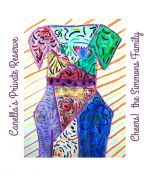
By Ben Hilzinger
There’s one in every family. That tactless, misunderstood relative you rarely invite to family gatherings because, once they’re there, once they know where you live, they’ll be inviting themselves any chance they get and infesting your world with all that is them. In many ways, the wine-world has that same perceived ‘bad seed’. In your family, he might be known as Uncle Brett, but winemakers just call him Brett or his full name, Brettanomyces. But just as the worst of humans can still win you over once you get to know them, certain strands of this roque yeast can actually be a good thing and America is finally starting to understand.
Similar to tannins, brett is found on many places in nature, but, in the context of wine, particularly on the skins of grapes. Thriving off small amounts of oxygen, once in your cellar, brett loves growing in barrels filled with wine, especially those that aren’t topped very well. Although not usually found in white wines, Brett is the rogue yeast with a reputation of such ill-placed aromas as animal sheddings, wet dog, sweaty saddle, metal, antiseptic, and band-aids in certain red wines. If you remember a recent blog we wrote, don’t mistake this for cork taint, which has a more musty quality and derives from a different source entirely. Although the presence of brett does not necessarily imply pour cellar hygiene, there are many ways to prevent the over-populating of this little pest such as chilling fermented wine and adding sulfur dioxide to prevent spoilage.
Originally found roughly one hundred years ago in British and Belgian beers, once Brettanomyces (literally Greek for “British Fungus”) takes up residence in your cellar or winemaking facility, its extremely hard to extinguish completely. Since its discovery, Brett shed light on an amazing difference between winemaking styles in America and France. Most vintners stateside will undoubtably agree that brett is bad, while the Frenchies have always thought that, in small doses, brett can actually impart positive characteristics.
 UC Davis, a school known for promoting new world, technical, and clean winemaking techniques has always been a huge advocate for the fight against brett. A recent study headed by professor Linda Bisson of UC Davis, however, concluded that “…there are many kinds of brett, and some give characteristics that are mostly perceived as positive. Out of 83 strains of brett that UC Davis tested, aroma panelists regarded 17 of them positively”. 17/83 might seem low at first, I mean, its barely a .200 batting average, but thats enough to realize its not a black and white issue. Another interesting variable in the study, however, is the fact that many of the panelists were from different countries and perceive aromas differently depending on their own cultural references. For example, “…older Americans compare compound 4EP to ‘Band Aids’ because many bandages once used a similar compound as an antiseptic…Chinese tasters thought the same aroma had the character of Chinese 5-spice and they liked it”.
UC Davis, a school known for promoting new world, technical, and clean winemaking techniques has always been a huge advocate for the fight against brett. A recent study headed by professor Linda Bisson of UC Davis, however, concluded that “…there are many kinds of brett, and some give characteristics that are mostly perceived as positive. Out of 83 strains of brett that UC Davis tested, aroma panelists regarded 17 of them positively”. 17/83 might seem low at first, I mean, its barely a .200 batting average, but thats enough to realize its not a black and white issue. Another interesting variable in the study, however, is the fact that many of the panelists were from different countries and perceive aromas differently depending on their own cultural references. For example, “…older Americans compare compound 4EP to ‘Band Aids’ because many bandages once used a similar compound as an antiseptic…Chinese tasters thought the same aroma had the character of Chinese 5-spice and they liked it”.
As I’ve always stated, wine is subjective and this study is the perfect example of how one man’s trash is another man’s treasure. Brett has a horrible reputation here in the states and for good reason. Many of the characteristics it imparts into our wine are references we perceive as “yucky”, but we can’t label this as a bad influence on all wine everywhere. Here at Northwest Cellars, we have gone to great lengths to avoid any and all traces of brett in any of our facilities. Cork taint is never a good thing, but brett can be appealing in some arenas. Brett is more like the misunderstood Uncle that always seems “out of place”, but in small doses can actually be a fun, cultured person. Who knows, maybe they’d like him more in China.
Drink Northwest Cellars. Cheers!












0 Comments